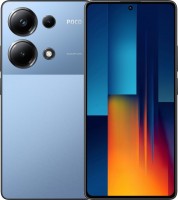Mobile Phones Poco series C (low-cost)
Poco C
The original Pocophone, released at the end of the last decade, became an extremely successful Xiaomi project, which later grew to the status of a subsidiary with its own designers, engineers, marketers and an ever-expanding model range. By the end of 2022, the range of pocophones has expanded to four product lines, which include diverse smartphones. So in the hierarchy of the company, Poco F devices occupy a leading position, Poco M and Poco X handsets belong to the middle level, and Poco C models are budget-class smartphones.
 |
The average Poco C is a massive smartphone with a 6.5 to 6.7-inch display, a simple camera with 2 or 3 photomodules, 2 to 3 GB of RAM and a capacious battery. To reduce the cost of production, Xiaomi decided to abandon Qualcomm processors in favor of more affordable processors from JLQ and Unisoc. In addition, Xiaomi saves on displays, using mostly inexpensive IPS matrices with HD resolution and modest color reproduction. But unlike other entry-level handsets, in Poco C smartphones you can find an NFC chip for contactless payment, a fingerprint scanner, modern Wi-Fi / Bluetooth modules or fast charging. For smartphones under $150, these things are rare.
At the time of this writing (note: October 2022), the most interesting, relevant and popular representative of this family is the Poco C40 model. This is a $135 smartphone that claims to be popular: it has fast charging, 4G, a fingerprint scanner, a long-lasting 6000 mAh battery and stereo speakers. At the same time, the smartphone is equipped with 3 or 4 GB of RAM (note: depends on the configuration) and a pretty good HD display based on a standard IPS matrix. The unusual 8-core JLQ JR510 processor, about which there is very little information so far, helps the smartphone to stay within the budget.



